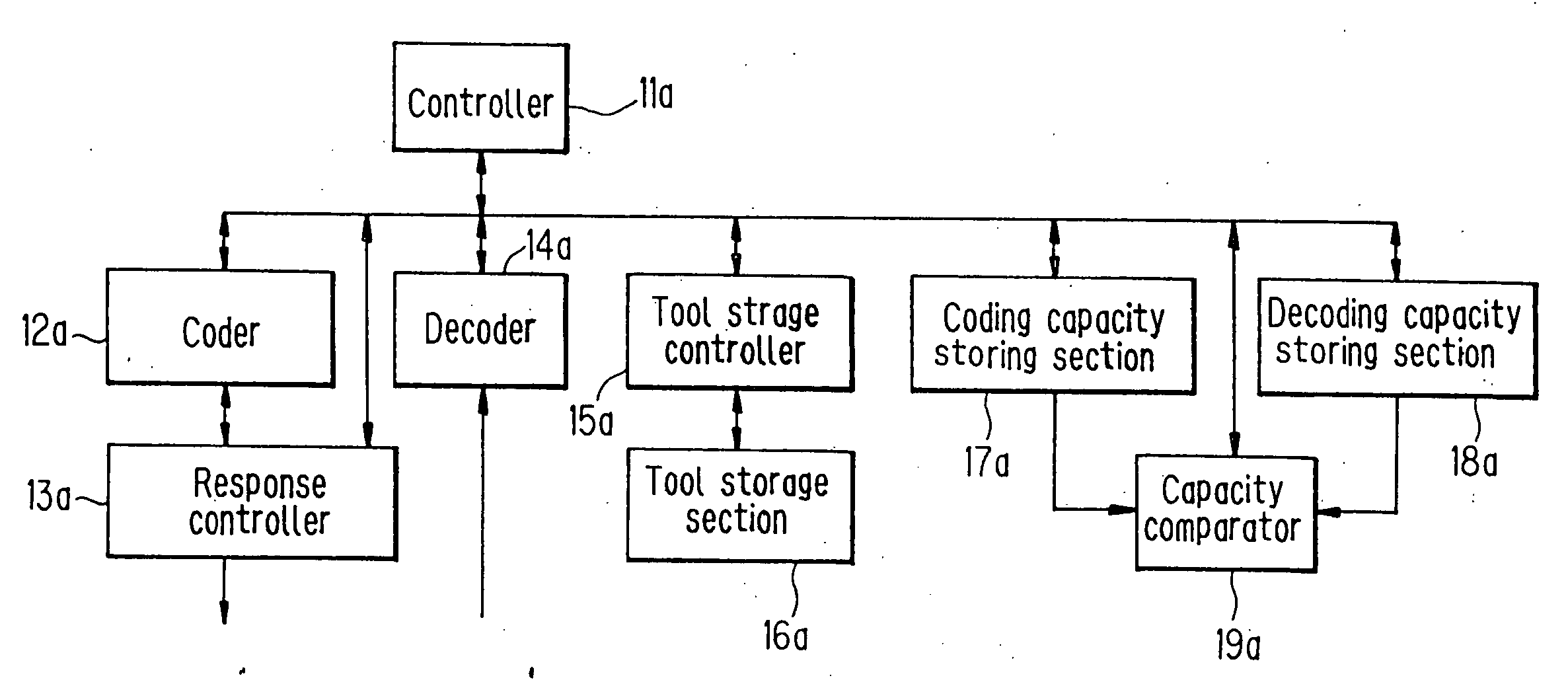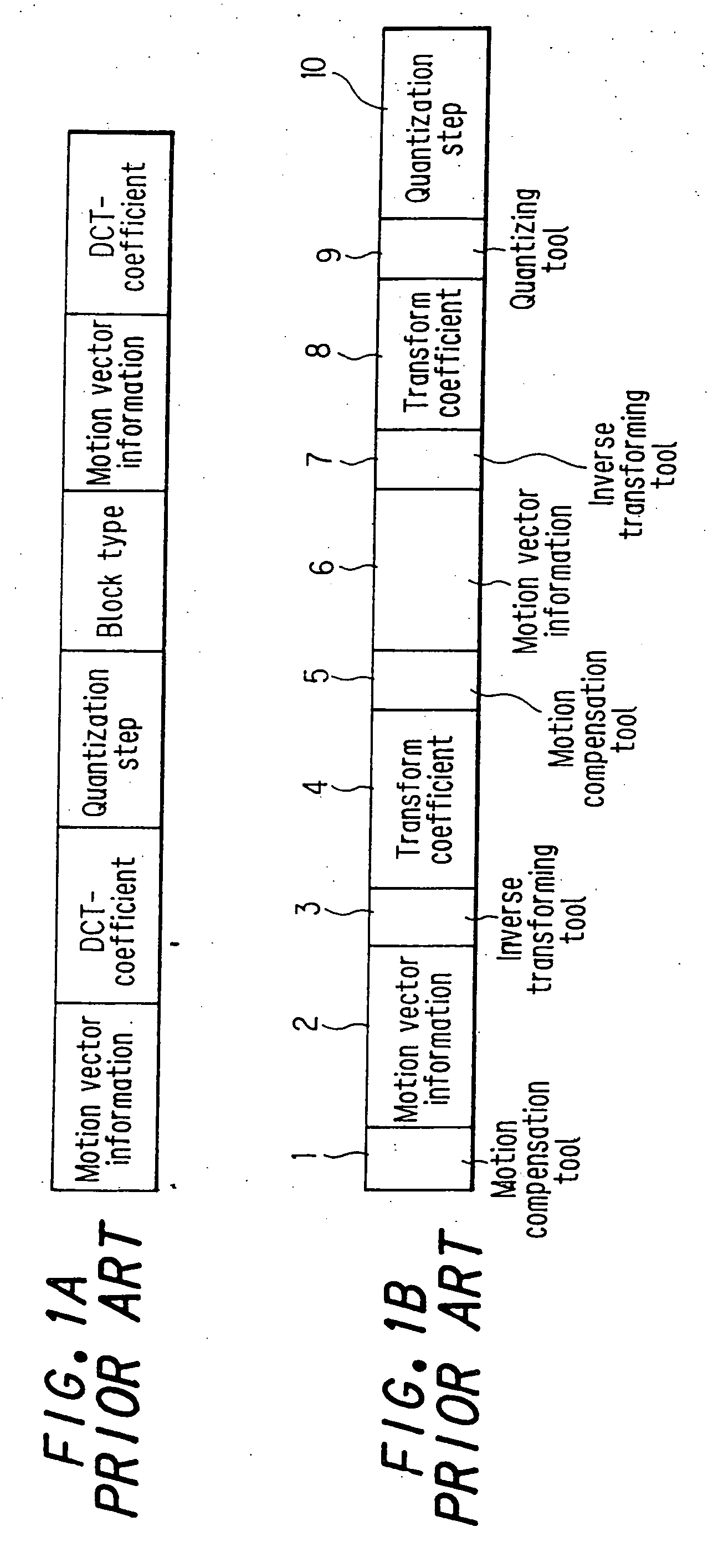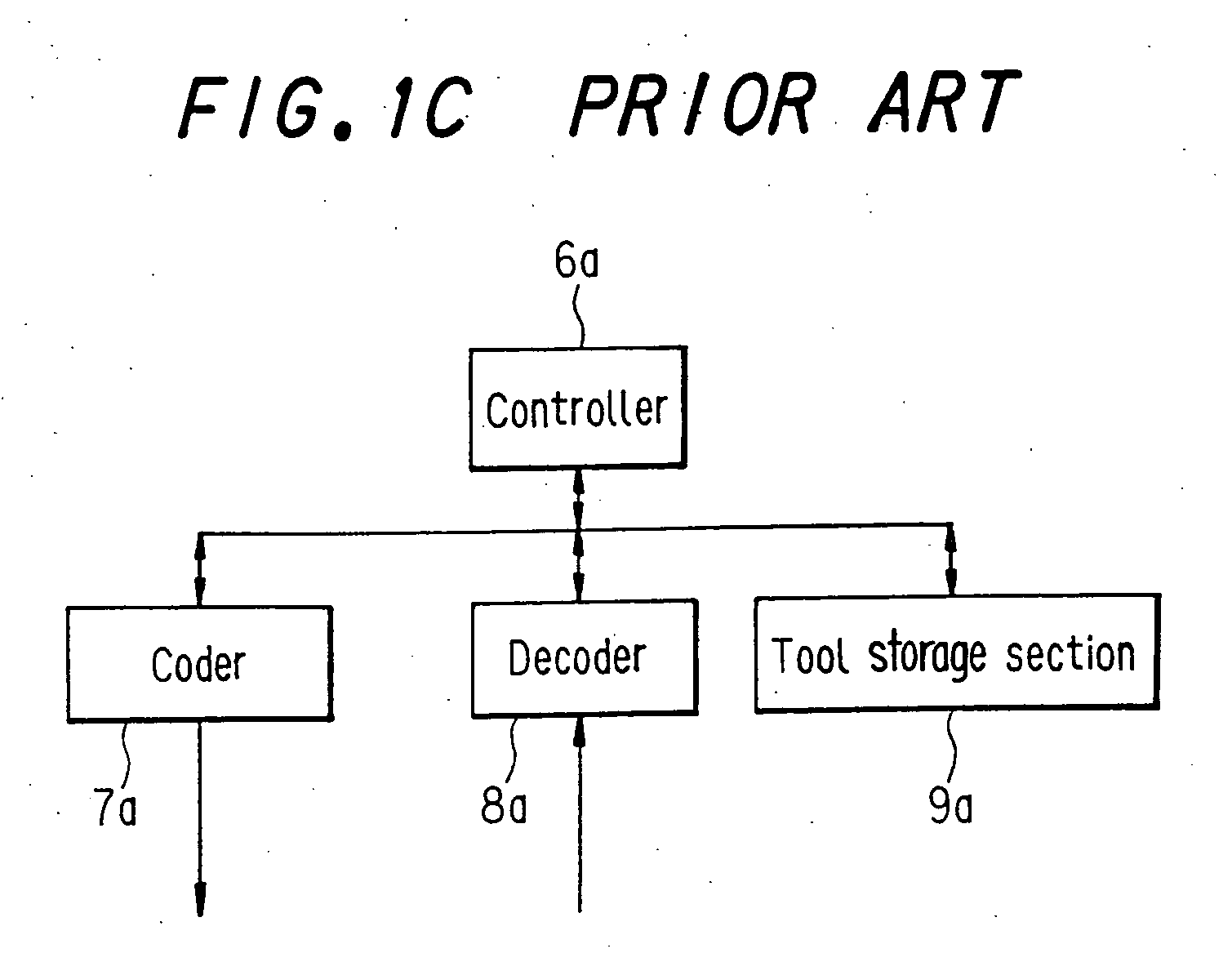Decoding apparatus using tool information for constructing a decoding algorithm
a decoding algorithm and tool information technology, applied in the field of decoding apparatus, can solve the problems of large image information, inability to decode data itself, and large scale of the decoding device, and achieve the effect of efficiently and quickly performing the decoding operation
- Summary
- Abstract
- Description
- Claims
- Application Information
AI Technical Summary
Benefits of technology
Problems solved by technology
Method used
Image
Examples
first embodiment
(First Embodiment)
[0114]FIG. 11 is a block diagram showing the first embodiment of a coding and decoding apparatus in accordance with the invention. This coding and decoding apparatus includes a controller 11a, a coder 12a, a response controller 13a, a decoder 14a, a tool storage controller 15a, a tool storage section 16a, a coding capacity storing section 17a, a decoding capacity storing section 18a and a capacity comparator 19a.
[0115] Controller 11a is a unit for controlling the entire apparatus. The total amount of the processing capacities for the tools in decoder 14a which constitute the algorithm is stored previously in decoding capacity storing section 18a as a decoding capacity. The processing capacity for each tool in decoder 14a is represented numerically. Coder 12a transmits each tool together with its numerical processing capacity required for the tool to the other terminal device.
[0116] Here, the capacity for a tool is represented numerically by selecting a standard o...
second embodiment
(Second Embodiment)
[0128] Table 2 shows an example of the control of tools in the second embodiment of a coding and decoding apparatus in accordance with the invention. As shown in Table 2, each tool is allotted with a unique key. For example, a tool for motion compensation with integer-pixel precision is assigned with a key Aa01. In the same manner, all the tools are allotted with corresponding keys so that each tool can be discriminated.
[0129]FIG. 13 shows an example of the key assignment. For instance, the key has a capital alphabetical character for broad classification (motion compensated prediction, DCT, etc.), a lowercase alphabetical character for subdivision (integer-pixel precision, half-pixel precision, etc.) and two digit numerals for version.
TABLE 2KeyToolAa01Integer-pixel precisionmotion compensationAb01Half-pixel precisionmotion compensationBa01DCTBb01Wavelet transformCa01Linear quantizationCb01Vector quantization
[0130]FIG. 14 is a block diagram showing a coding ap...
third embodiment
(Third Embodiment)
[0140] In reference to drawings, description will be made of a coding and decoding apparatus of the third embodiment of the invention hereinbelow in which a video signal is sampled per ¼ pixel by the frame predictive coding so that the coded data is transmitted and the transmitted data is decoded.
[0141]FIG. 18 is a system block diagram showing the configuration of an overall transmitting and receiving system to which a coding and decoding apparatus of the invention is applied. A transmitting system la shown in the figure includes: a video input unit 101 converting video information inputting through unillustrated visual sensor into a video signal; a coding apparatus 102 coding the inputted video signal from the video input unit 101 to produce coded data; a transmitter 103 outputting the coded data produced by coding apparatus 102 onto a communication net 300.
[0142] Here, coding apparatus 102 is composed of: a transformer 121 receiving the video signal and subject...
PUM
 Login to View More
Login to View More Abstract
Description
Claims
Application Information
 Login to View More
Login to View More - R&D
- Intellectual Property
- Life Sciences
- Materials
- Tech Scout
- Unparalleled Data Quality
- Higher Quality Content
- 60% Fewer Hallucinations
Browse by: Latest US Patents, China's latest patents, Technical Efficacy Thesaurus, Application Domain, Technology Topic, Popular Technical Reports.
© 2025 PatSnap. All rights reserved.Legal|Privacy policy|Modern Slavery Act Transparency Statement|Sitemap|About US| Contact US: help@patsnap.com



